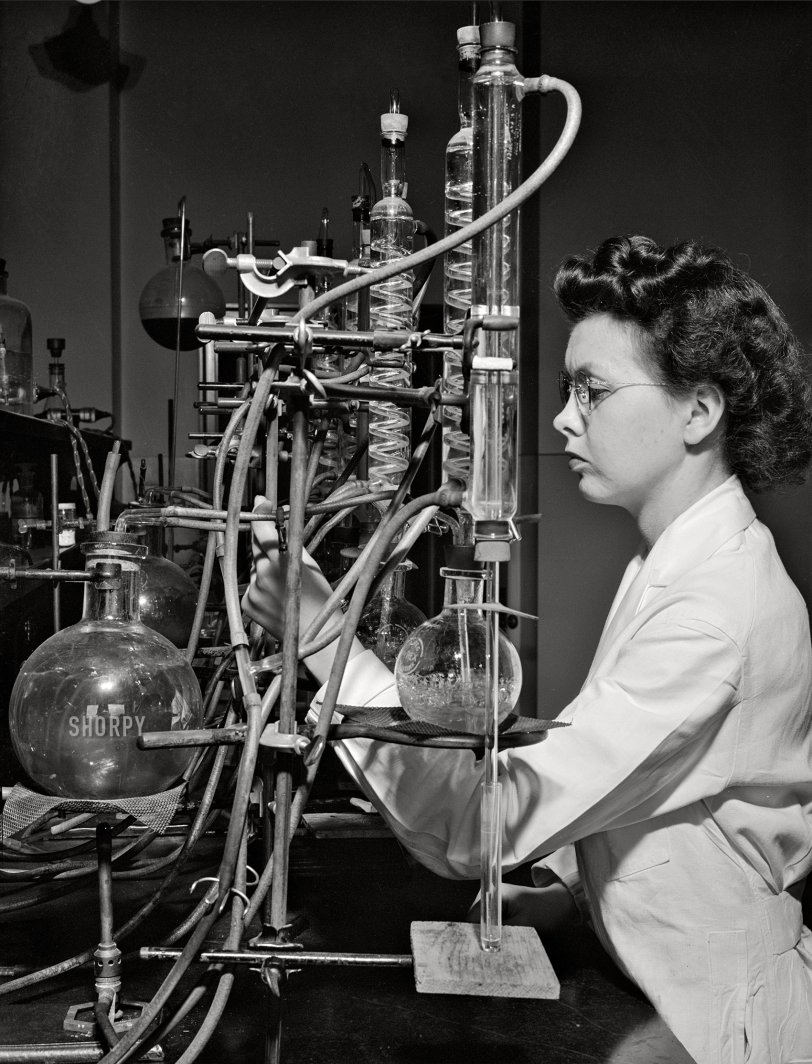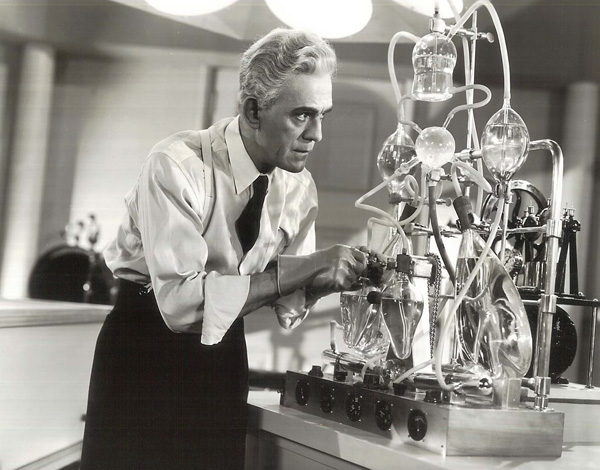


Framed or unframed, desk size to sofa size, printed by us in Arizona and Alabama since 2007. Explore now.
Shorpy is funded by you. Patreon contributors get an ad-free experience.
Learn more.

- Baldwin 62303
- Baldwin VO-1000
- Cold
- No expense spared
- Tough Guys
- Lost in Toyland
- And without gloves
- If I were a blindfolded time traveler
- Smoke Consumer Also Cooks
- Oh that stove!
- Possibly still there?
- What?!?
- $100 Reward
- Freeze Frame
- Texas Flyer wanted
- Just a Year Too Soon
- WWII -- Replacing men with women at the railroad crossing.
- Yes, Icing
- You kids drive me nuts!
- NOT An Easy Job
- I wonder
- Just add window boxes
- Icing Platform?
- Indiana Harbor Belt abides
- Freezing haze
- Corrections (for those who care)
- C&NW at Nelson
- Fallen Flags
- A dangerous job made worse
- Water Stop
Print Emporium
Bettering Butter: 1942

May 1942. "Iowa State College. Ames, Iowa. Miss Jeanne Dougherty, graduate in Bacteriology, working in the laboratory in the Dairy Industry Department. She is conducting experiments on the effects of acids on flavor of butter." Acetate negative by Jack Delano. View full size.
Learning model
Fortunately she decided not to pursue her studies under Dr. Karloff.

Quite a Fancy setup there.
But it's available in any Vape shop these days. Ah, Progress --
Ahead of Her Time
Watch that Bunsen burner carefully, or you might discover CRISPR.
Future WAVE and Pharmacy Mate 1st Class
According to the obituary of Jeanne Dougherty McDonald (1918-2008), in 1943 she enlisted as a Navy WAVE and served two years at the Oak Knoll Naval Hospital in Oakland, California, and six months at Great Lakes Naval Hospital in Illinois, attaining the rank of Pharmacy Mate 1st Class. Upon her discharge in 1945 she worked at the Mayo Clinic for over two years before returning to her hometown of Waukon, Iowa (in the state's far northeastern corner), to marry Mr. McDonald. Like her parents, she and her husband went into the restaurant business. They also operated a Dolly Madison Dairy, where the skills she learned as a grad student in bacteriology at Moo U (as Hawkeye fans derisively call it) no doubt benefited the customers.
Acids in Butter
Butyric acid (the name comes from the Greek word for butter) is another saturated fatty acid in butter. It smells like vomit when isolated and some people are quite sensitive to it and won't eat cheeses that have some, such as parmesan. The concentration is about 2% in butter. It is normally part of a triglyceride but breaks away when butter becomes rancid, accounting for much of the undesirable odor. Miss Dougherty is distilling a sample and capturing butyric and other fatty acids as they boil off.
She knows what she's doing
Shorpy must be kept on a low heat, so he doesn't coagulate. Aside from that -- why would you want to know how acids affect the taste of butter? Of what acids do we speak?
[Butter is over two-thirds saturated fatty acids -- palmitic acid, stearic acid, myristic acid, etc. - Dave]
























On Shorpy:
Today’s Top 5